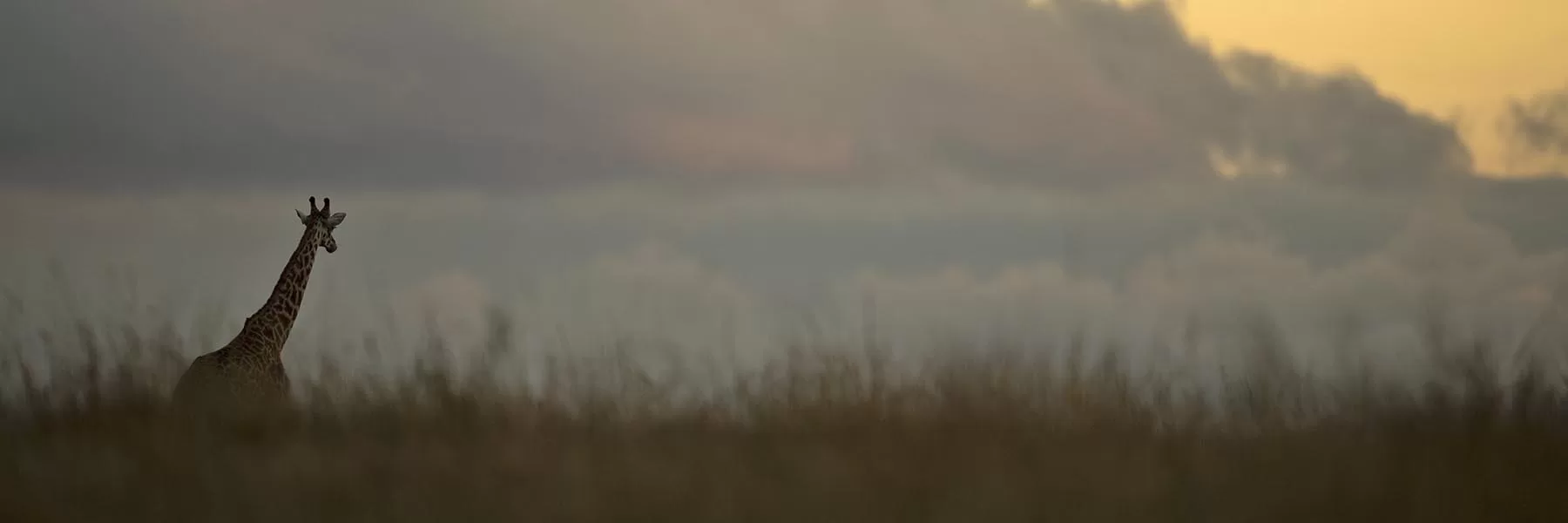The Maasai Mara, a renowned national game reserve in Kenya, is adjacent to Tanzania‘s Serengeti National Park. It is one of the most important wildlife conservation and wilderness areas in Africa, showcasing an impressive variety of species, including lions, cheetahs, African leopards, and African bush elephants. This national reserve truly shows the best of Africa’s wildlife. For those looking for the ultimate Masai Mara safari experience, the best time to visit Maasai Mara is during the Great Migration, a breathtaking natural phenomenon. This annual event witnesses a magnificent migration of wildebeest and other animals from the Serengeti and making their way to the Maasai Mara.
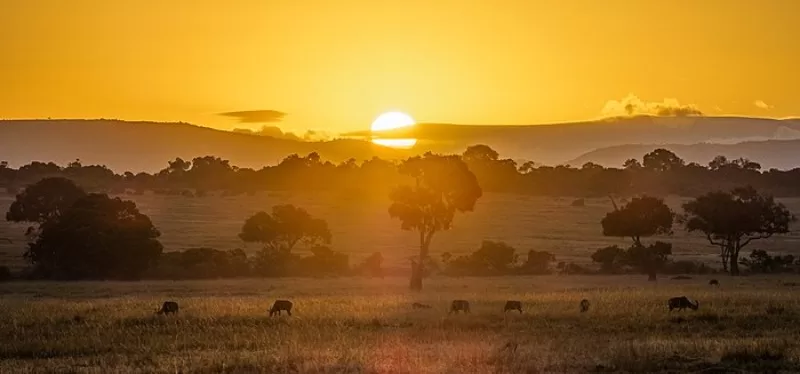
A beautiful scenery of Maasai Mara
With its diverse wildlife and the amazing Great Migration, Maasai Mara offers a unique experience for game drives and safaris, making it a top destination for nature enthusiasts. To truly savor this amazing natural wonder, planning a tour of Kenya’s wildlife safari experience is highly recommended.
Best Time to Visit Masai Mara
Seasons, climates, and timings are important and must always be taken into consideration while traveling, and the Mara isn’t an exception. But there is no better time to visit the Masai Mara National Game Reserve and other conservancies in the neighborhood, as they are active all year.
However, there is a best time to visit and witness activities that take place in the Masai Mara.
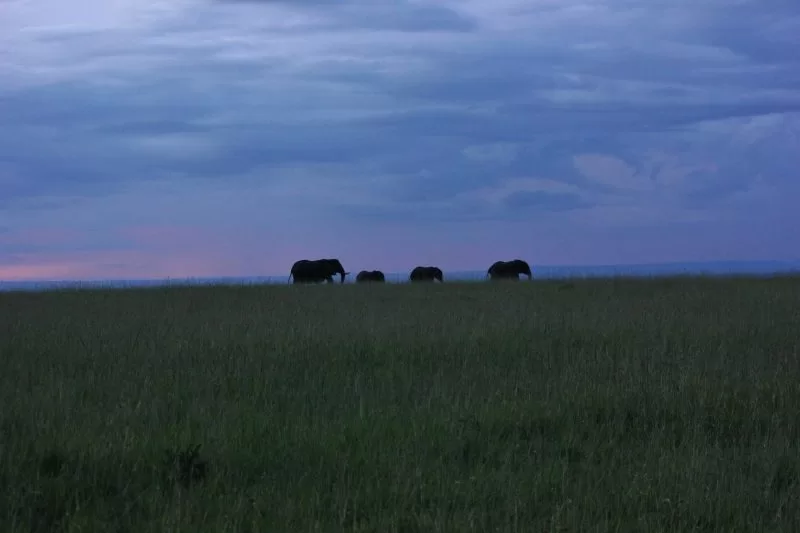
Elephants strolling leisurely in the reserve
In Maasai Mara National Park, the climate is semi-arid all year round, where it is pleasantly warm during the day while the night becomes cooler. The area of the national park is located south of the equator, where temperatures are slightly higher from October to March. From June to August, it is slightly cooler, and nights are particularly chilly as the temperature drops to 10°C.
So here are some seasons and best times visit to Masai Mara mentioned below:
Season 1: Wet Season (Shorty Rainy Season (Nov-Dec) | Long Rainy Season (March-May)
The wet season takes place in November and goes on until April. There are two rainy periods in the wet season: the ‘short rains’ occur in November and go on till December. The ‘heavy or long rains’ take place from April to May. The wet season is characterized as:
- November and December: These months experience short rains where afternoon temperatures are 27°C.
- March, April, and May: These three months are known for their rainy periods, with April being the wettest month and receiving regular showers. Early mornings experience temperatures around 13°C.
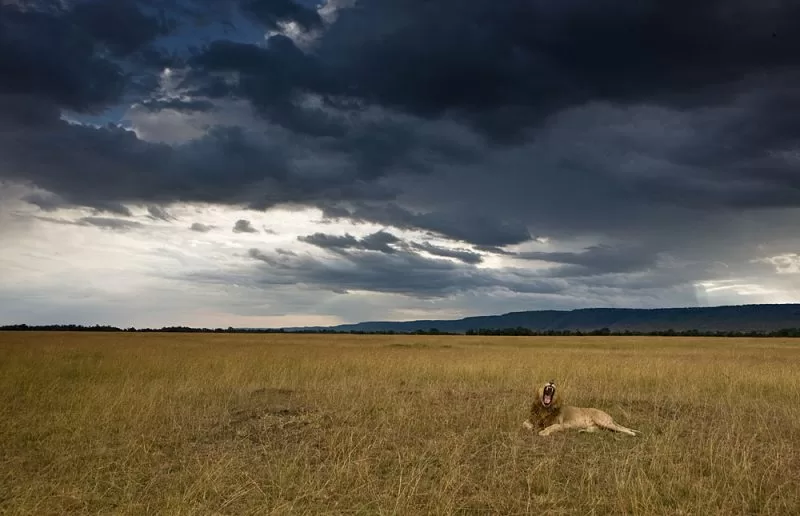
A cloudy day in Maasai Mara
Advantages and Wildlife Sightings During Wet Season
Visiting the Masai Mara during the wet season might be tricky as the rain might interfere with your activities, but also has some amazing perks! One of the biggest advantages is that there are fewer people around, so you can have more space to enjoy the beautiful views and watch the wildlife in peace. The landscape turns into a lush green paradise, and the clouds in the sky add a touch of drama.
Another reason that this is a special time is because you may get to witness newborn baby animals. It will become a paradise for Bird watchers as there will be lots of different birds to see, including migratory ones. Lions, cheetahs, and leopards are still out which makes for some really exciting safaris. There could be some hidden surprises in the thick vegetation, and you might even witness thrilling chases and hunts. So, the best time to visit is the rainy season if you are looking for some thrilling adventure in Masai Mara with a bit of rain.
Season 2: Dry Season (June – October)
Maasai Mara’s dry season starts in June and ends in October. The air during these months is the driest. Tourists can enjoy the warm weather, although there might be a shower or two and chilly nights during the dry season. Given the different altitudes of the Maasai Mara, visitors going on early morning drives may need warm clothes.
The dry season is characterised by:
- January to March: These months are dry and relatively hot.
- June to August: There are chances of rain showers in June, but the rest of the months are mostly sunny and dry. The afternoon records an average temperature of 25°C, but evenings and early mornings experience colder weather, around 12°C.
- September and October: These months remain dry, although they might occasionally experience rainfall. Temperatures in October become warmer and hover around 27°C, which further decreases with rain. Chilly early mornings are expected during these months.
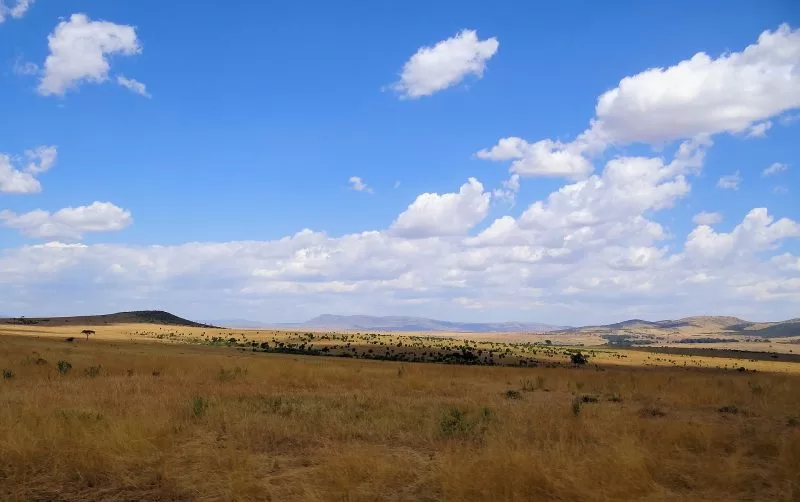
A typical clear day at the Mara
Advantages and Wildlife Sightings During Dry Season
The dry season is considered to be the best time to visit, with the mild weather and sparse vegetation, it’s easier to spot wildlife in Masai Mara. Animals gather around water sources, providing excellent viewing opportunities. This period is also the best time for animal watching, as you will have the chance to see the famous “Big Five”: lions, elephants, buffaloes, leopards, and rhinoceroses, along with cheetahs, zebras, giraffes, and so many more fascinating creatures.
So, for the amazing wildlife adventure, plan your visit from July to October. During these months, you’ll have the best chance to witness the incredible Great Wildebeest Migration, enjoy clear skies and sunny days, and experience the magic of Masai Mara in all its glory! However, it’s important to note that during this time, the park can get quite crowded with many vehicles trying to catch a glimpse of these amazing sights.
Seasons of Maasai Mara
1. Best season for birdwatchers (November to April)
There are more than 500 bird species recorded in the Maasai Mara, making it a remarkable place to observe birds. The park is particularly abundant in raptors, waders, and migratory birds.
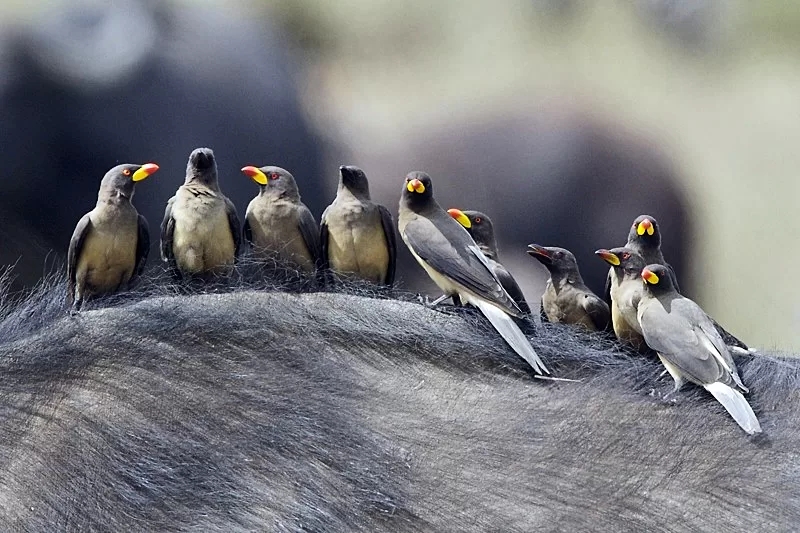
Yellow-billed oxpeckers seated on the back of a buffalo
The best months for birdwatchers are considered to be from November to April. During this period, migratory birds come to the Mara from Europe to spend their winter here. It should be noted that these months are also the wettest, where quick rain showers are frequent.
So, the best time for birdwatchers and wildlife enthusiasts to visit Masai Mara is undoubtedly from November to April. This window presents a unique opportunity to witness the breathtaking avian spectacle that unfolds in this remarkable wilderness.
2. The calving season (November and December)
The calving season in the Maasai Mara takes place in November and December. Wildebeest, zebras, and antelopes give birth to calves, foals, and fawns. A high concentration of predators, including lions, are on the lookout for their prey, and sightings of lion pride can also be seen.
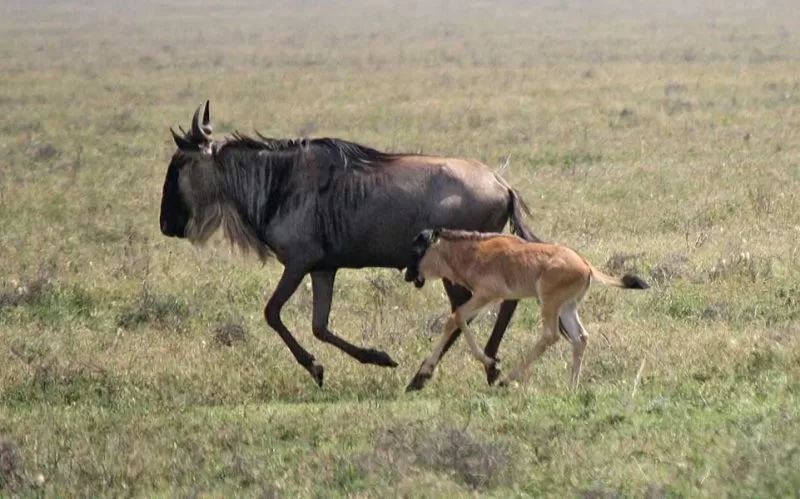
A wildebeest and its calf
As there is no rain during these months, the vegetation becomes less dense, and one can easily observe animals on game drives.
3. The Green season (April to June)
The green season is usually referred to as the early spring or rainy period. During this time, the Maasai Mara receives large amounts of rainfall. The months from April to June mark this season. This period became magnificent to witness the reserve as the savannahs became clearer, free of dust and haze. It makes Africa’s landscape look the best.
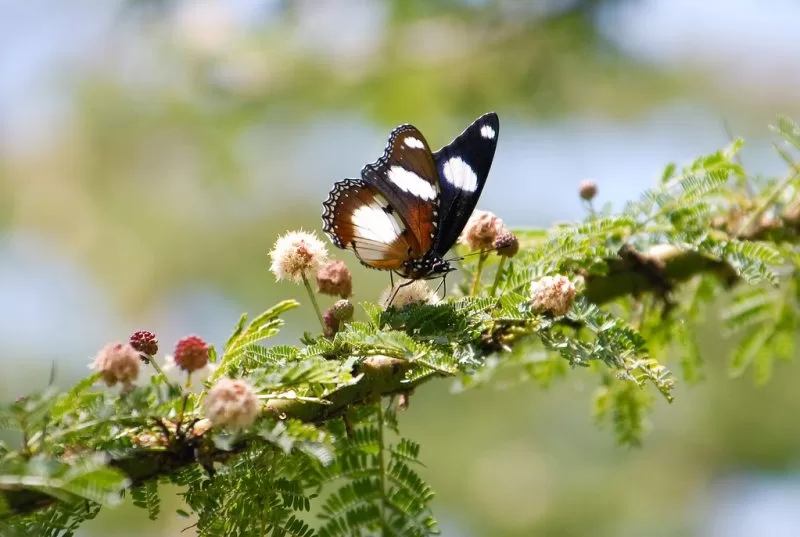
A Milkweed butterfly helps pollinate flowers in the Mara
During this period, colorful migratory birds arrive in their thousands and reside in the Mara. The blooming flowers and trees add to the beautiful scenery of the park. Visiting the Maasai Mara during this season is considered the ultimate way to spend your Easter break.
4. The Migration season (June – October)
The best time to visit and experience the Great Wildebeest Migration in the Masai Mara is from July to October, which is the dry season. At this time, millions of wildebeest, antelopes, and zebras go on a journey across rivers filled with crocodiles, while lions wait for their prey.
The herds speed up as the short rains draw them southwest. With the waning showers and extensive grazing causing the grass to dry and shorten, the wildebeest migrate further south in search of lush pastures.
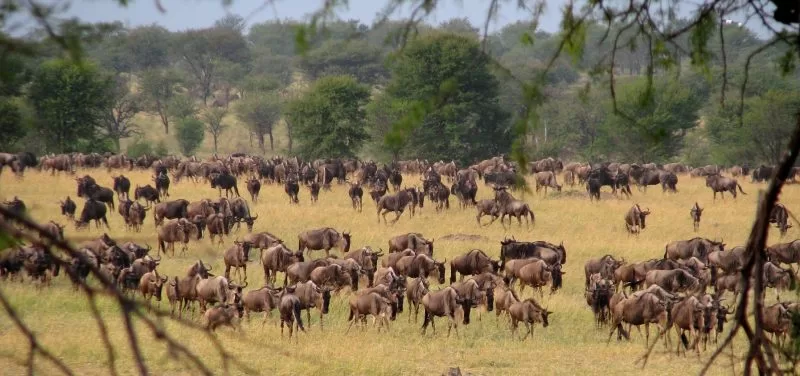
The magnificent wildebeest migration
Many refer to the Mara River crossing as “the greatest show on earth,” but it’s actually one of the most thrilling adventures to witness. Predators such as Nile crocodiles and lions wait patiently and continuously for the ideal opportunity to attack. Over a million wildebeest go on this journey from the Serengeti in Tanzania to the Masai Mara Reserve in Kenya. It’s a breathtaking natural event that you absolutely must not miss!
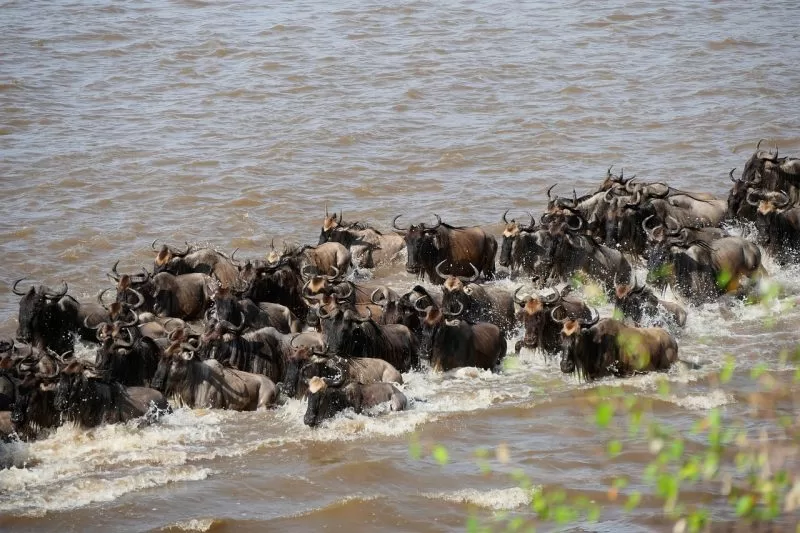
Wildebeests crossing the Mara river
The Masai Mara’s different seasons and months offer a variety of activities for tourists. Yet, no matter the period you pick, the park reserve will never disappoint with its incredible wildlife.
Frequently Asked Questions
Are there any travel restrictions in Masai Mara?
Travel restrictions in Masai Mara may be in place. These can include visa requirements, park fees, and wildlife regulations. Please check official sources and consult with reputable travel agencies for the latest information before planning your visit.
Which is the best month to visit Masai Mara?
Most travelers consider that the best time of year to visit Masai Mara is during the long cool-dry season, which runs from July to October.
How to reach Masai Mara?
The most common way to reach Masai Mara is by flying into Nairobi and then taking a domestic flight to one of the nearby airstrips. Alternatively, there are road options available, but they may take longer.
What should I carry for a safari?
Important items include comfortable clothing, grip footwear, a wide-brimmed hat, sunscreen, binoculars, a camera, and any personal medications. It’s also recommended to bring layered clothing for varying temperatures throughout the day.
Photo Gallery
Stunning Moments in Masai Mara
For a visual preview of the stunning moments you can expect in Masai Mara, please visit our Masai Mara/Kenya gallery.
By choosing the best time to visit Masai Mara, you ensure a safari experience that will leave you with memories to last a lifetime. Witnessing the incredible wildlife and breathtaking landscapes in their natural habitat is an adventure like no other. Plan your trip wisely, and let the magic of Masai Mara unfold before you.
If you loved reading this story, then subscribe to our blog here (it will ask to verify your email) to get inspiring travel stories and trivia delivered to your email. Stories about wildlife trivia, cultural experiences, curated luxury hotel lists, underrated places to travel, polar journeys and much more.


